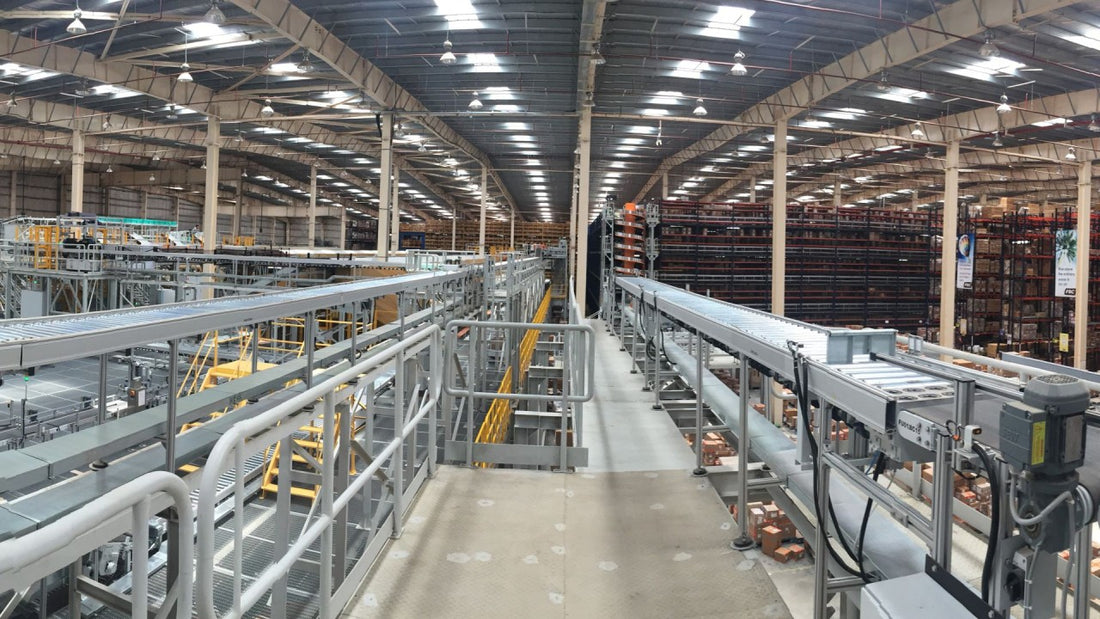
U.S. Intralogistics Market to Reach $14 Billion by 2030, Growing at a CAGR of 15% Driven by Automation, E-Commerce, and Supply Chain Optimization
Share

The U.S. Intralogistics Market is experiencing significant growth, fueled by the increasing adoption of automation technologies and the rising demand for efficient supply chain management solutions.
According to a recent report by Next Move Strategy Consulting, U.S. Intralogistics Market is predicted to reach USD 14 billion with a CAGR of 15% by 2030.
Secure a FREE Sample: https://www.nextmsc.com/us-intralogistics-market/request-sample
Key Growth Drivers:
- Surge in E-Commerce Demand: The rapid growth of e-commerce has significantly impacted the intralogistics market. Retailers and logistics providers are investing in advanced intralogistics systems to streamline their warehouse and distribution center operations, enabling faster order fulfillment and better inventory management. Automation technologies like automated storage and retrieval systems (ASRS), robotics, and conveyors are essential for handling high order volumes and meeting customer expectations for faster delivery.
- Adoption of Automation and Robotics: Automation is transforming the intralogistics landscape. With the integration of robots, automated guided vehicles (AGVs), and robotic process automation (RPA), businesses are improving operational efficiency, reducing human error, and optimizing labor costs. These systems help to handle materials more quickly and precisely, reducing processing times and increasing throughput in warehouses and manufacturing facilities.
- Supply Chain Optimization and Inventory Management: In today's fast-paced, globalized market, companies are increasingly focused on optimizing their supply chains to reduce costs and improve responsiveness. Advanced intralogistics solutions provide real-time tracking, predictive analytics, and automated decision-making, allowing businesses to improve their supply chain visibility, enhance order accuracy, and optimize inventory management.
- Technological Advancements in Artificial Intelligence (AI) and Machine Learning (ML): AI and ML are playing an increasingly important role in transforming intralogistics operations. From predictive maintenance to optimizing inventory and routing, these technologies help businesses make data-driven decisions that enhance overall performance and operational agility. As AI-powered systems become more sophisticated, they are enabling warehouses and logistics providers to achieve higher levels of efficiency and flexibility.
- Labor Shortages and Cost Pressures: The ongoing labor shortages and rising labor costs in the U.S. are driving the need for automation in intralogistics. Companies are looking for ways to address labor gaps while reducing operational costs. Automated systems, such as autonomous mobile robots (AMRs) and robotic arms, are helping businesses alleviate these challenges by automating repetitive tasks and freeing up workers to focus on higher-value activities.
Market Segmentation:
By Component
- Hardware
- Automated Storage and Retrieval Systems (AS/RS)
- Unit-Load AS/RS
- Mini-Load AS/RS
- Vertical Lift Modules (VLMs)
- Carousel AS/RS
- Industrial Robots
- Mobile Robots
- Automated Guided Vehicles (AGV)
- Autonomous Mobile Robots (AMR)
- Conveyor Systems
- Sortation Systems
- Software
- Services
By End User Industry
- Logistics
- Food and Beverages
- Retail and E-Commerce
- Automotive
- Chemicals
- Pharmaceuticals
- Airport
- Mining
Inquire Before Buying: https://www.nextmsc.com/us-intralogistics-market/inquire-before-buying
Key Players:
The U.S. intralogistics market is highly competitive, with key players driving technological advancements and automation solutions. Leading companies include:
- Daifuku Co. Ltd.
- Jungheinrich AG
- Kion Group AG
- Honeywell International Inc.
- Midea Group
- Vanderlande Industries B.V.
- SSI Schaefer AG
- KNAPP AG
- Beumer Group Gmbh and Co. KG
- Autostore
Challenges Ahead:
Despite strong growth prospects, the U.S. intralogistics market faces several challenges. High initial capital investments for automation systems and the need for skilled labor to manage complex intralogistics operations may deter some smaller businesses from adopting these technologies. Additionally, data security and privacy concerns related to IoT-enabled devices and cloud computing solutions can pose potential risks for companies. Finally, integrating new technologies into existing legacy systems can present technical hurdles for businesses seeking to modernize their intralogistics infrastructure.
Conclusion:
The U.S. intralogistics market is set to experience robust growth over the next decade, driven by the increasing demand for automation, advanced robotics, and supply chain optimization technologies. With the continued rise of e-commerce, labor challenges, and technological innovations in AI and machine learning, intralogistics solutions are becoming a crucial component of business operations across industries. Companies that leverage these innovations will be able to improve operational efficiency, reduce costs, and stay ahead of the competition in an increasingly complex and fast-paced market.
Browse Related Reports:
- Africa Ventilation Fan Market size is predicted to reach USD 60 million at a CAGR of 11%.
- South Korea Ventilation Fan Market size is predicted to reach USD 66 million at a CAGR of 7
- Latin America Ventilation Fan Market size is predicted to reach USD 106 million at a CAGR of 5 %
For more information, please contact:
Next Move Strategy Consulting
E-Mail: info@nextmsc.com
Direct: +1-217-650-7991
Website: www.nextmsc.com
Follow Us: LinkedIn | Twitter | Facebook | Instagram | YouTube
About Next Move Strategy Consulting:
Next Move Strategy Consulting is a leading market research and management consulting firm specializing in delivering actionable insights and data-driven strategies. With a focus on emerging markets and technologies, we provide high-quality, customized research reports to help businesses stay ahead of trends and make informed decisions. Our comprehensive market research services support strategic growth, innovation, and competitive advantage across various sectors.